Content marketing is everywhere. You’ve probably experienced it yourself—maybe you’ve read a helpful blog post, watched an engaging how-to video, or downloaded a free guide. That’s content marketing in action.
Here’s why it works: instead of interrupting someone’s day with an ad, you’re offering something useful or interesting that draws them in naturally.
By focusing on what your audience cares about, content marketing can help you connect, inform, and build relationships that last. Whether you’re new to it or looking to refine your strategy, understanding the basics can set you up for success.
Disclaimer: If you buy any products through links on this site, I may earn a commission. But it doesn't make any difference to your cost, and it helps me keep this blog running. So you could always read my articles for free.
What is content marketing?
Content marketing is a marketing strategy used to attract, engage, and retain customers by creating and sharing valuable and relevant content over a period of time. The content can include articles, videos, podcasts, and other formats.
This is different from other sales and marketing approaches because the focus is on building trust and establishing your expertise. Not immediate selling.
Instead of pitching your business, you are providing content that helps potential customers meet their goals and solve their problems.
Case in point: Shopify. Using a combination of articles, podcasts, videos, and other content, they answer common questions asked by their audience.

As a result, content marketing has played a big role in Shopify’s achievement of $184.1 million in revenue growth in a year, from $205.2M to $389.3M.
Content marketing attracts a defined audience, promotes brand awareness, builds a relationship, and makes people interested in your business.
Once your prospects start seeing you as a valuable source of guidance, they’ll have the same confidence in your products and services.
Now that you’re aware of what is content marketing, let’s see why it is important.
Why is content marketing important?
Content marketing is an essential part of your growth strategy. Your audience is already searching for information. Why not provide it to them?
In an IZEA survey of marketers and consumers, content marketing achieved top ratings in effectiveness, with year-on-year perceptual benefits.
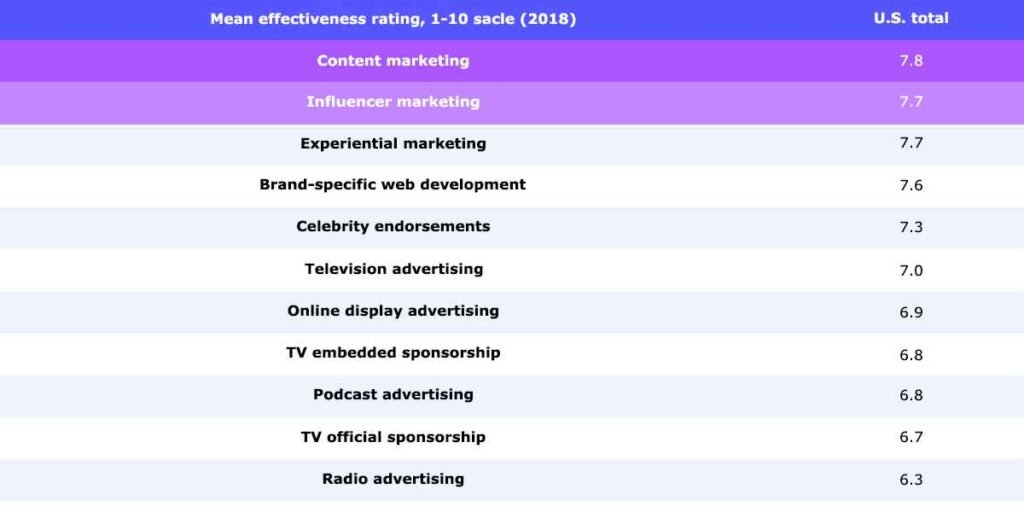
Without content marketing, you are likely to miss many valuable opportunities to drive traffic, leads, and sales.
That’s because high-quality content is the fuel you need for all types of digital marketing, from social media marketing and PR to SEO and email marketing.
When you share useful information with your prospects, they spend time reading and knowing about your business. This helps you nurture them into leads and customers.
Benefits of content marketing
Content marketing offers plenty of benefits. It increases website conversion rates and generates more leads than traditional marketing. And it provides a competitive advantage. With content marketing, you can:
Get found in search engine results
Your prospects can’t buy from you if they can’t find you. That means you need traffic. And according to BrightEdge Research, the majority of online traffic comes from organic results of search engines.
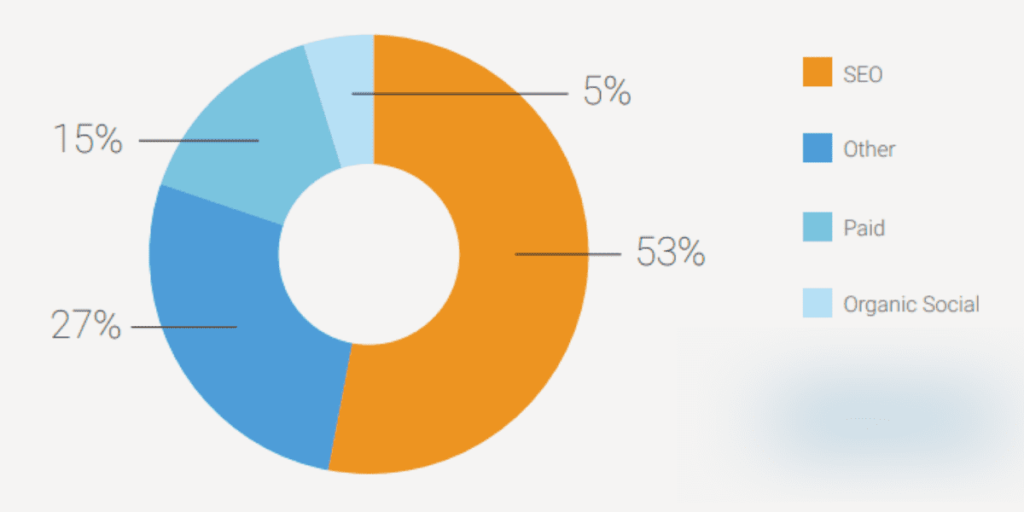
So, if you want to raise brand awareness, you can’t overlook SEO. And what is content marketing if not critical for SEO?
This is because each new piece of content is an opportunity to rank for new search queries, and get traffic from those keywords.
Establish thought leadership/authority
66% of marketers consider thought leadership a “top priority” for their company. Now, you can’t build thought leadership without sharing unique thoughts. And what are these thoughts, if not content?
Content marketing lets you demonstrate your knowledge and expertise. You help prospects answer key questions and handle their challenges with your content. And you get their trust and loyalty in return.
For example, Vendasta’s white papers help the company share insightful research into the topics their prospects care about. And one such white paper is a renowned churn study.

By analyzing data from 100,000 businesses that use the platform, Vendasta determined the leading causes of client loss and combined this information with ways to improve client retention.
Over the last couple of years, this thought-leadership content has amassed hundreds of social media shares, dozens of backlinks, and contributed to the conversion of hundreds of marketing qualified leads (MQLs).
Generate leads
79% of content marketers use it to generate leads, according to a Semrush report.

By understanding content marketing’s meaning, you can bring qualified leads to your doorstep by giving them a reason to visit your website, follow you on social media, or join your email newsletter.
Close sales
Content lets you sell more. For someone on the verge of converting, your information can be the final push. When anyone views your content and considers it interesting as well as enlightening, it could be the final reason they need to become a customer.
Save money and increase marketing ROI
Content marketing is among the most economical approaches for organizations. If you publish an article, for example, it will consistently generate traffic for years.
When you are engaged in content marketing, you’re constantly creating fresh content. This way, content marketing helps you expand your reach and get sustainable growth.
Overall, content marketing delivers an outstanding ROI for your organization.
Till now we’ve talked about what is content marketing, its importance, and its benefits. We’ll now discuss different types of content marketing.
Types of content marketing (and examples)
Using content to grow your business is more than just understanding the meaning of content marketing.
There are different kinds of content marketing, just as there are countless kinds of content. So, to execute it well, you must understand what sort of content your target customers want.
So how do you pick the types of content you should create? Look at all the marketing channels you plan to use.
For each marketing channel, you’ll need a different approach, format, management, and strategy. Let’s check the top five types of content marketing.
Blog posts
Blog posts are one of the most crucial types of content that businesses produce to get leads. When you build a blog, you draft content on a subject and give important details to your readers.
For example, SnackNation wrote the most thorough blog post possible on the topic of employee wellness. And it helped them increase their homepage traffic by 59%, driving $100,000 in monthly revenue.
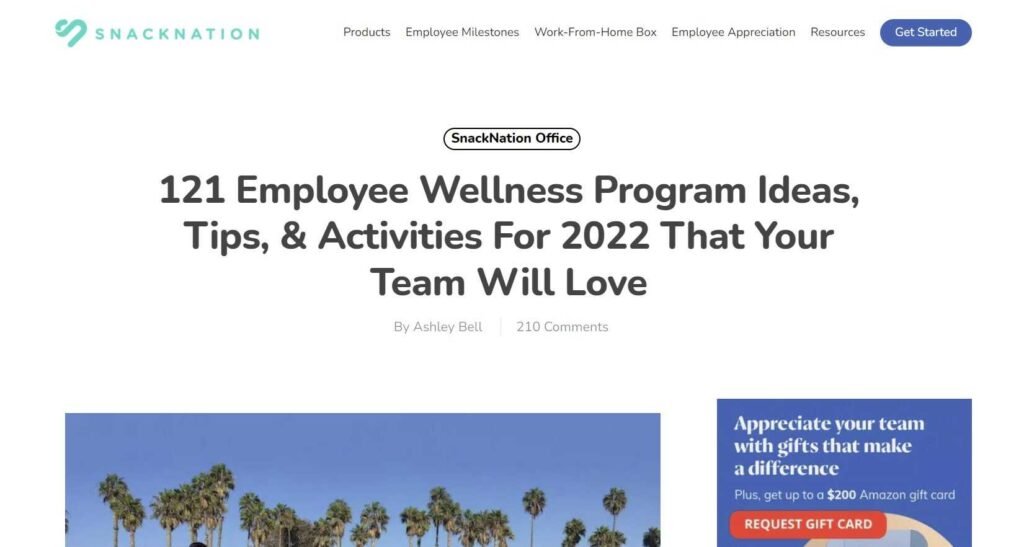
Videos
Video is another rock-solid entry in the types of content marketing. 81% of US marketers plan to include videos in their marketing strategy in the coming years, according to a survey.
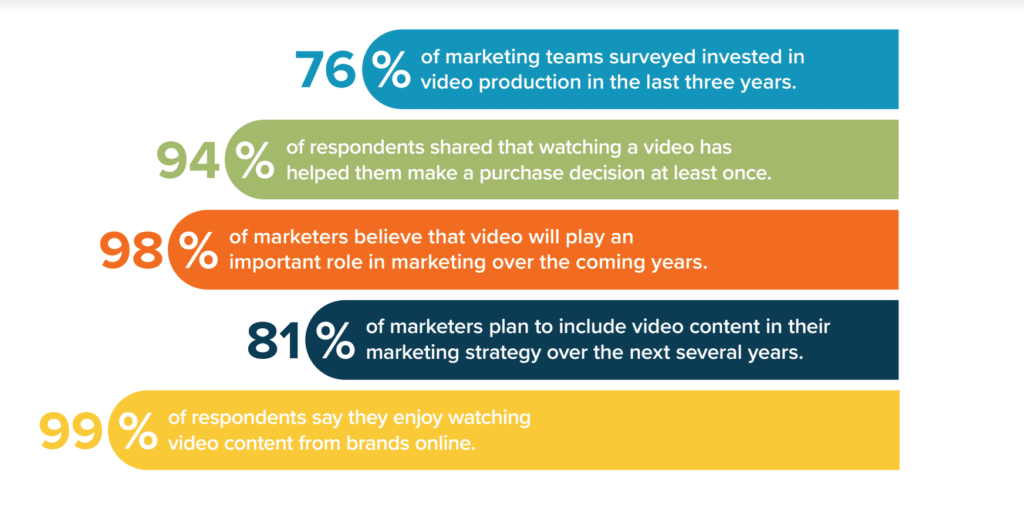
Image Source: Lemonlight
Videos let you deliver information fast and provide a visual experience to your audience. So it works extremely well in terms of getting engagement and social media shares.
Moz is a great example of a brand that gets video marketing right. It hosts an educational video series known as Whiteboard Friday. By teaching SEO concepts through videos, the company strengthens its thought leadership and potential to spread through word-of-mouth.
Infographics
Like videos, Infographics provide information in a visually appealing way. With this type of content, you can break down complex details like statistics or processes. And in doing so, you make the content more digestible.
For example, Imperva is known for turning its research data into engaging infographics. As the company operates in the cybersecurity niche, its use of infographics goes a long way in turning boring topics into interesting stories. Here’s one of their infographics for illustration.

Podcast episodes
A podcast is a series of files that let you communicate with your audience on a particular subject or theme in audio format. If your prospects like the content, they can listen to it on the go, and even subscribe to your upcoming episodes.
Case in point: The SaaS Marketing Show. Launched by Dylan Hey, this podcast provides listeners with useful insights on growing a SaaS business.
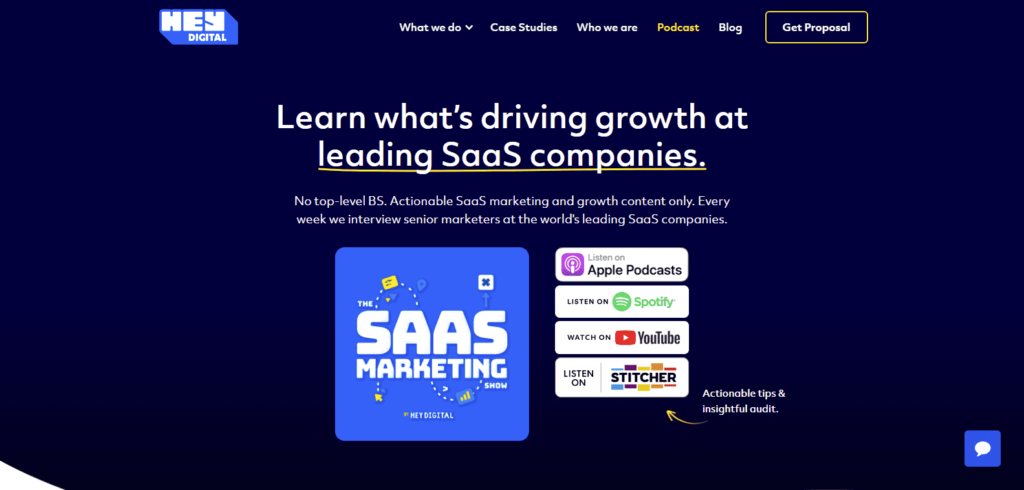
How does content marketing work?
Content marketing works by providing people with the material they need at each stage of the buyers’ journey. When done right, content marketing helps you deliver the right information at the right time.
For example, if someone is not aware of your brand, then you can assume that they’re in the early stages of the journey. So you create content that appears in search engine results and brings them to your website.
Similarly, if someone is already aware of your brand and considering your product or service, then they’re in the later stages of the journey. So you can share content such as case studies, comparison with competitors, etc. In other words, you provide content that helps persuade them to make a purchase.
Let’s understand what is content marketing with respect to the consumer journey by taking a look at all the stages and the content associated with these stages in more detail.
Awareness stage
In this stage, your purpose is to spread brand awareness. So your content should aim to solve the top problems your prospects face. It would be more educational than promotional. For example:
- A bike touring business creating a short clip about the best bike trip ideas
- An interior design firm sharing an ebook about choosing the right wall colors
Consideration stage
In the consideration stage, your content will offer a combination of helpful and promotional content. It educates the prospects in a way that gives you a chance to subtly mention your product or service. For example:
- A helpdesk software company sharing the best ways to improve customer service, where some of the ways would require using a piece of software like theirs
- A roofing company creating a report about what to look for when hiring a roofing contractor
Closing stage
Content marketing also comes into action when a prospect is close to buying. At this stage, you share content that focuses on sales. In other words, content in this stage will be purely promotional and 100% focused on selling. For example:
- A digital marketing agency creating videos demonstrating past work with different clients
- A physician showcasing testimonials from patients about his practice, expertise in diagnosing issues, and state-of-the-art equipment
How to get started with content marketing?
Content marketing can feel overwhelming, but it doesn’t have to be. And there are many firms offering content marketing services. So if you aren’t ready to handle it in-house, hiring an agency is your best option.
But if you want to do your own content marketing, here are the steps you need for an effective content marketing strategy.
Identify your audience
What is content marketing without a proper audience? Nothing. That’s why before you start creating content, define your target audience. Having a clear picture of their pain points, priorities, and preferences lets you create content that resonates with them. You can document information such as:
- Demographics
- Buying habits
- Socioeconomic status
- Interests and hobbies
Using this information, you can build an ideal customer profile to understand a typical customer’s online behavior and content consumption.

Image Source: Oberlo
Social media websites like Facebook, Twitter, and LinkedIn are a goldmine for audience data. And they all offer some type of analytics solution to get more information about your niche market.
Facebook Audience Insights, for instance, is a powerful marketing analytics tool available. So you can easily find more people like the ones in your current audience. Here’s what it typically looks like.

The left part allows you to select the audience attributes you already know and the right part shows you the data. There is also a demographics overview that lets you see details like age, gender breakdowns, education levels, job titles, relationship statuses, and more.
Set goals and KPIs
Set content goals that will complement your broader business goals. The top three goals of content marketers are boosting sales (29%), building relationships with customers (19%), and increasing brand awareness (18%), according to eMarketer.
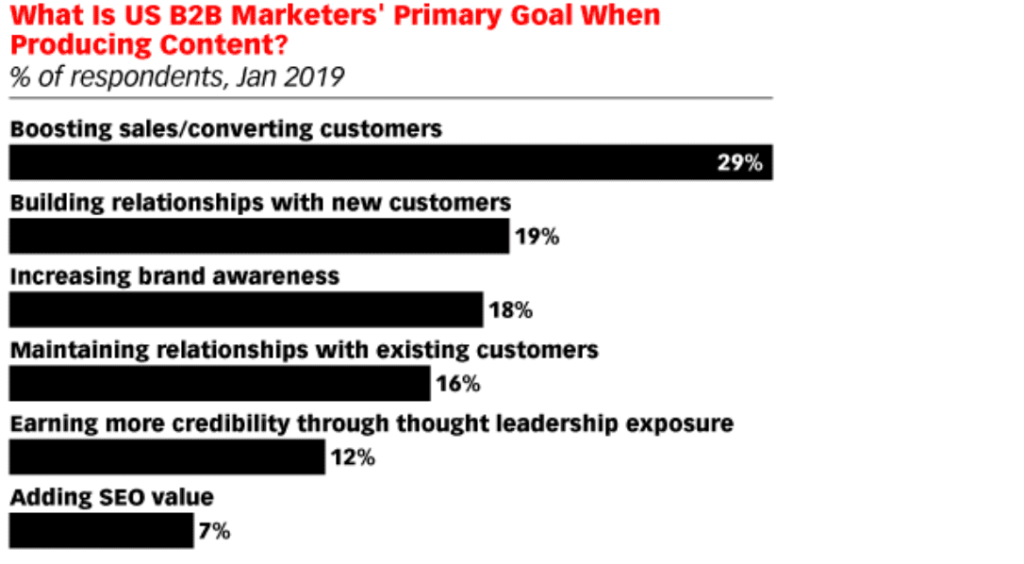
Image Source: eMarketer
Then set KPIs (or key performance indicators) for each goal to measure performance for those goals. For example, if your goal is brand awareness, your KPIs could be monthly website traffic, social media mentions, the number of new email subscribers, and so on.
Also, make sure your goals are specific, realistic, and tangible. For example, “increasing monthly search traffic by 10% in three months” is a better goal than “raising brand awareness.”
Determine the right formats
Once you know your target audience to some extent, you can focus on the channels they use to find and consume information, along with the types of content they prefer.
For example, if your prospects hang out frequently on YouTube, you can assume that they prefer watching medium to long-duration videos.
Plus, you also need to consider your own strengths, budget, and resources. If you’re going to create content yourself, then your content formats will also depend on what you’re most comfortable with.
If writing comes naturally, the most common way to start content marketing is blogging. And if you talk more easily and you’re comfortable in front of a camera, you may want to shoot videos or podcasts.
Plan content ideas
Next, you need to come up with several topics on which you’ll create content in the next three to six months. And one of the best ways to do that is to analyze what type of information your prospects are searching for.
That’s where keyword research comes in. Keywords are the search queries that people type in a search engine like Google to find the content they need.
And note that in SEO terms, a keyword isn’t necessarily a single word. It can consist of multiple words. For example, “shoes” is a keyword, and so is “men’s leather shoes.”
To find the keywords people are searching related to your business or industry, first you need to come up with some initial keywords on your own. These are called seed keywords.
For example, if you run a local yoga studio in London, your seed keywords could be “yoga lessons in London,” “London yoga classes,” etc.
Then you can enter one of your seed keywords in a keyword research tool (such as KWFinder) to get more keyword ideas.
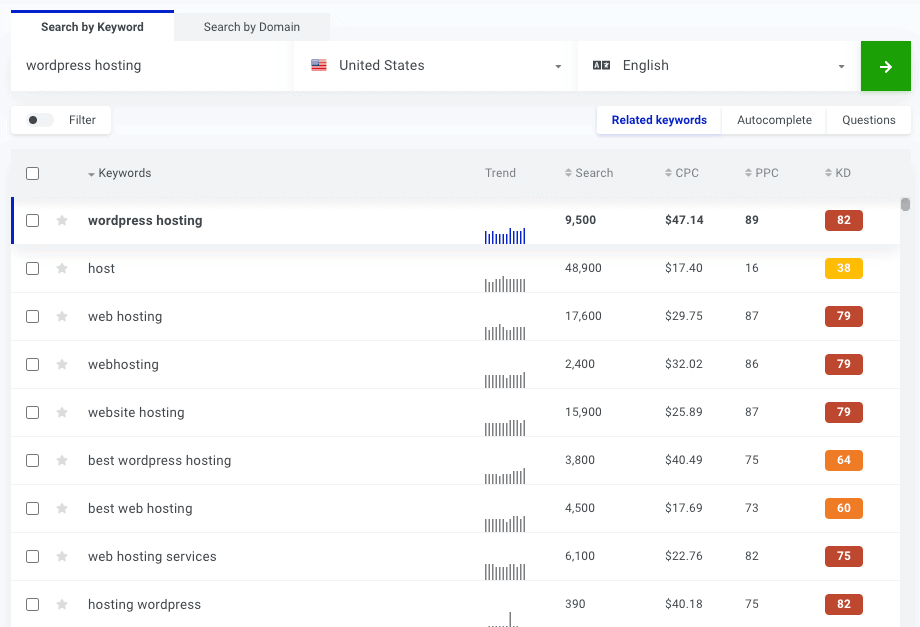
The tool will not just give you keywords to create content, but also show you other useful data such as:
- How many searches happen for those keywords in a month.
- How difficult it would be to get a high ranking on Google
These metrics will help you pin down and prioritize the most important content ideas you should focus on.
Choose a sustainable schedule
According to a survey by CoSchedule, the most organized marketers are 397% more likely to report success.
So once you have a list of content topics you want to target, it’s time to plan when and how will each piece of content be produced and published. And this is done with a content calendar. Here is an example of a completed editorial calendar for a home and lifestyle magazine:
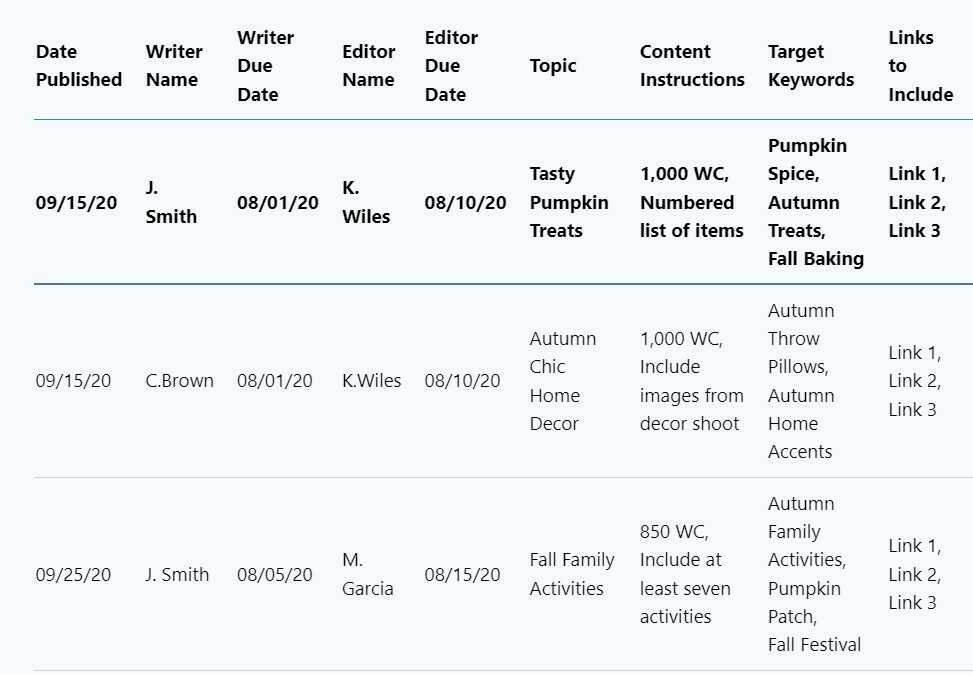
You don’t need much to create a simple content calendar for your business. In fact, you can use a Google spreadsheet or Trello to begin.
Trello has a template called Editorial Calendar that you can modify according to your content schedule.
As you’re building your content calendar, you’ll also need to decide who will write, edit, and proofread each piece of content.
If you don’t have someone to write in-house, hire a professional to help. In fact, 81% of marketing professionals outsource content writing.
Determine how you’ll distribute/promote content
Just creating content is not enough. You’ll also need to figure out ways to promote content that are best suited for your business and audience.
These may include advertising on social media, SEO, sharing content on related forums, distributing content to people who subscribe to your email newsletter, and so on.
According to research by CMI, the top three organic (free) content distribution channels marketers use are social media (91%), their organization’s website/blog (89%), and email (87%).
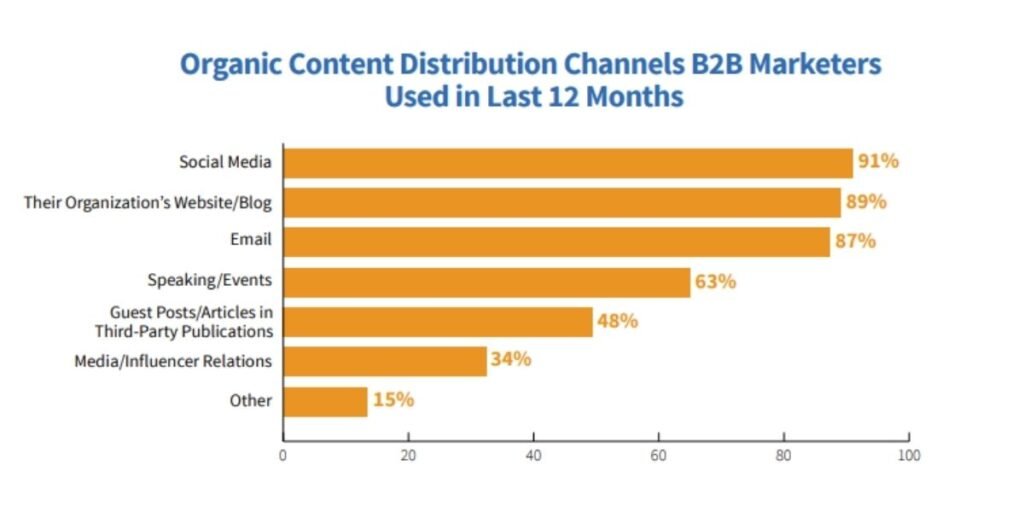
Image Source: Content Marketing Institute
Another great way to expand the reach of your content is to repurpose it for different platforms. For example, you can repurpose a blog post into a video and upload it to YouTube, or create an infographic for Pinterest.
Let’s say you want to repurpose a blog post into a video. You can do that easily using a tool like Wideo, InVideo, and Lumen5.

When you log in to Wideo, for instance, select the video template, fill out the form with the title and subtitles of your post, and click on create button.
Conclusion: get started with content marketing
Content marketing can deliver excellent outcomes for your business. Of course, it can be overwhelming at first. But with the right steps, you will get good at it in no time.
The more you learn about what is content marketing and apply these lessons to your campaigns, the more you’ll engage your prospects and turn them into customers.
If you’re still confused about what is content marketing and are struggling to get started with your content marketing strategy and execution, then HypeGig is here to help. Contact us to speak with a strategist about our content marketing services!
Did we miss anything? Do you have any more questions or comments about what is content marketing? Share your thoughts below in the comments section.


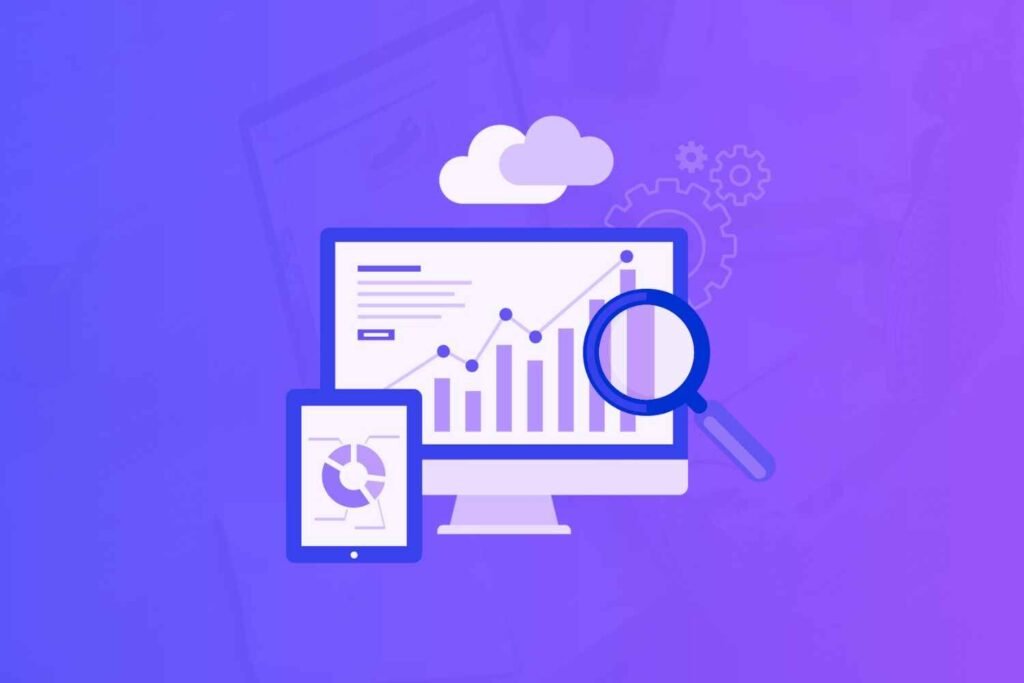



I was really delighted to read your post on content marketing. I’m so grateful to you for giving me this wonderful experience!
This article provides an excellent introduction to content marketing. The author did a great job of explaining the fundamentals of content marketing and its role in driving business growth. I appreciate the emphasis on creating valuable, relevant, and engaging content to attract and retain the target audience. The tips and best practices shared here are practical and actionable.